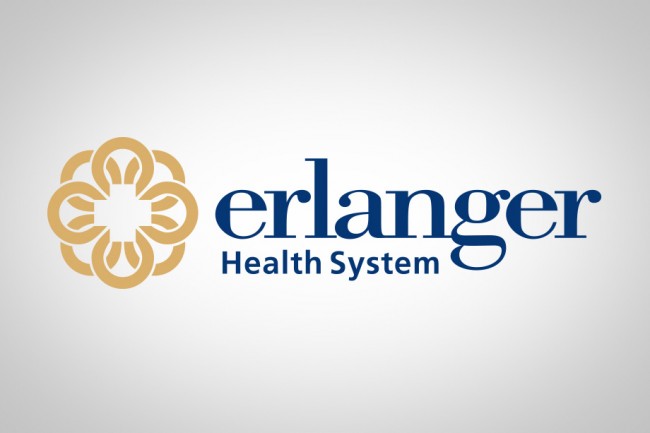The Erlanger Health System continues to make positive strides toward a more financially stable organization through strong operational performance, sound strategic decisions, and strengthened relationships with physicians throughout the community and region.
Erlanger’s commitment to strategic growth, deploying advanced medical technology, and investing capital in our community to ensure superior quality healthcare, has generated sustained positive earnings for the Erlanger Health System this fiscal year.
At the Board’s Budget and Finance Committee meeting today, Erlanger CFO Britt Tabor stated that Erlanger posted $11.4 million in total net income during the third quarter (January – March 2015), compared to third quarter losses of $4.2 million last year. Tabor said these earnings reflect the focus of Erlanger President and CEO Kevin Spiegel and his leadership team on top-line, sustainable growth and strengthened physician relations. “Our CEO believes strongly that Erlanger has the best physicians and associates in the region, and knows their exceptional care for our patients has played a major role in our organization’s success,” he said.
Faced with a competitive landscape and continuous reimbursement pressures, Erlanger’s year-to-date net income now stands at $25.3 million, with only three months left in the fiscal year, Tabor told trustees. For the prior year period ending March 31, 2014 Erlanger had an $8.7 million loss.
“The strategic plans we put in place this fiscal year have yielded strong positive results, and enabled us to invest in improvements at Erlanger and for the community we serve,” he said. Erlanger has infused $71 million from bond sales into major growth initiatives.
“Erlanger’s latest earnings are even more impressive considering the $61.1 million in uncompensated care our health system provided the community the past nine months,” the CFO said. He added unbudgeted raises for employees also came from third-quarter earnings.
Another significant measure in Erlanger’s financial picture is days of cash-on-hand. At the end of its third quarter, Erlanger’s days cash-on-hand stands at 96 days – substantially higher than the 65 days cash-on-hand at the end of 2013. “We have effectively balanced the positive increase in days cash-on-hand with the significant increased investment in capital improvements,” Tabor said. This achievement is the direct result of Erlanger’s focus on physician relations, operating efficiencies and cash collections, he said.
Across the Board Growth
This fiscal year Erlanger’s plan has centered on growth and effective implementation of strategic initiatives, knowing that reaching specific growth targets would require a total realignment of the healthcare system. The success of that plan was evident throughout Erlanger’s third quarter earnings statement. Tabor reported that admissions the past three months were almost 6% over budget and 13.5% higher than last year.
“Erlanger’s focus on building our Cardiology Center of Excellence through physician alignment, physical expansion efforts, and our affiliation with Columbia University HeartSource has clearly paid off,” Tabor said. “During our third quarter, Erlanger achieved unprecedented volumes in our Cath Lab, with procedures 36% over budget and 40.6% greater than last year.”
Other highlights from tonight’s third quarter financial report included emergency room visits, which were 4.6% over budget and 12.3% higher than last year. Overall, surgical patients have also exceeded prior year volumes, with inpatient surgeries 13% higher than last year and outpatient surgeries 9.2% greater. Third quarter orthopedic inpatient surgeries were 2.6% over budget and 16.3% greater than last year and the number of inpatient heart/thoracic procedures performed at Erlanger was more than 26% greater than last year, Tabor told trustees.
Erlanger’s $25 million investment in clinical expansion for growth in its designated centers of excellence has also yielded impressive results. “There is no question our financial commitment had a major impact on Erlanger’s dramatic growth in orthopedics, cardiology, urology, oncology and DaVinci robotic procedures,” Tabor said.
Children’s Hospital volume increases are also indicative of growth in the pediatric market. According to Tabor, neonatal ICU volumes exceeded budget projections by 21% during the third quarter and were 17.5% greater than last year. “Our pediatric ICU volumes are also following the same trend, at 20% greater than budget and almost 40% higher than last year,” he reported.
The number of helicopter patients was almost 6% greater than last year, and there were no diverts recorded during Erlanger’s third quarter.
During his April earnings report, Tabor presented the latest overall market share figures comparing Erlanger and another local, non-profit healthcare provider, showing significant gains for Erlanger and a corresponding drop for its competitor. “This is additional confirmation that our targeted, strategic growth plan – with a focus on physician alignment, advanced technology, and re-investing in our facilities and associates – is working,” Tabor said. “We continue to exceed our projections, from ER visits to admissions to business growth, in all our centers of excellence,” he emphasized.







